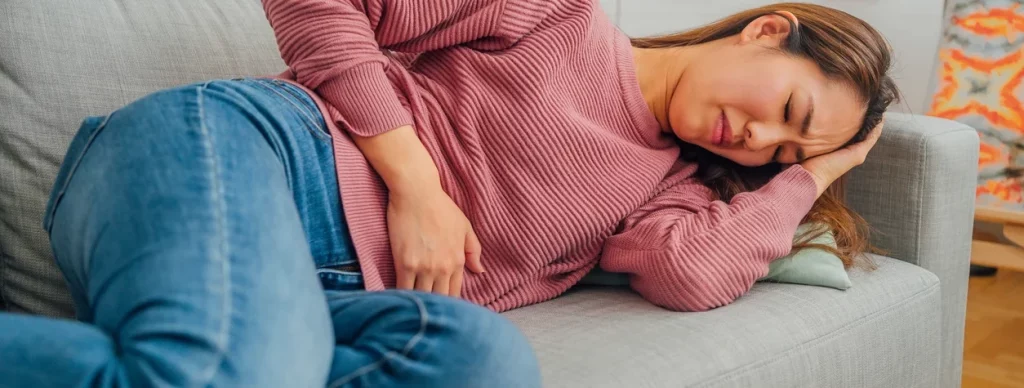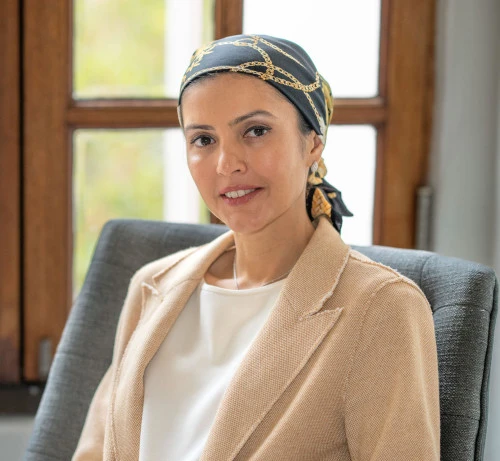
Uterine Fibroid Treatment Center Los Angeles & Newport Beach, CA
The Center for Endometriosis & Fertility in Los Angeles & Newport Beach, California
Uterine Fibroids Explained
Uterine fibroids are described as benign tumors that develop from the uterus’s smooth muscle tissue. Think of them as abnormally organized knots of muscle and fibrous tissue. Anywhere from 20% to 50% of reproductive-aged women have uterine fibroids, and the National Institutes of Health estimates 80% of women will have uterine fibroids by age 50. However, only about a third of these uterine fibroids cause clinical symptoms and are diagnosed by a healthcare provider. The majority of women remain undiagnosed and have fibroids without even knowing it. You need to visit the best fibroid treatment center Los Angeles & Newport Beach, CA, for your healthy life.
Where Uterine Fibroids Can Grow
There are four main types of uterine fibroids: subserosal, intramural, submucosal, and pedunculated, all of which can vary in size from a few millimeters in diameter up to a few inches. Each is classified by its location in the uterus, which also impacts symptoms and treatment options.
- Submucosal: Growing into the uterine cavity (endometrium), these often cause heavy bleeding.
- Intramural: The most common type, embedded within the muscular uterine wall.
- Subserosal: Protruding outward from the uterus, they can sometimes put pressure on other organs.
- Pedunculated: Attached to the uterus by a stalk, either inside or outside.
Submucosal Fibroids
Submucosal Fibroids develop underneath the endometrium (the lining of the uterus), protrude into the uterine cavity, and even ones can cause significant problems due to their direct impact on the uterine lining. These types of fibroids interfere with the normal growth and shedding of the uterine lining, leading to excessively heavy and longer periods, with occasional ‘in-between cycles’ bleeding. This excessive blood loss can lead to iron-deficiency anemia, causing fatigue, weakness, and other ailments. A feeling of fullness or heaviness can create a sense of pressure being placed on the lower abdomen. Submucosal fibroids often cause severe cramping and pain during menstruation, worse than a woman’s typical period discomfort, and can distort the uterine cavity to such a degree that it’s difficult for a fertilized egg to implant.
These fibroids are also associated with a slightly higher risk of miscarriage, which is a major pregnancy challenge. Undergoing a transvaginal ultrasound and hysteroscopy, where a thin camera is passed through the cervix, allows direct visual inspection of the inside of the uterus to confirm a submucosal fibroid. The severity of the symptoms they can cause, submucosal fibroids are usually treated with surgical removal (hysteroscopic myomectomy, see below).
Intramural Fibroids
Intramural Fibroids are the most common type of uterine fibroid and develop within the thick muscular wall of the uterus (the myometrium). Intramural fibroids can range from tiny to quite large. Because they’re situated closer to the uterine cavity, they tend to cause more symptoms compared to those deeper within the muscle, including extended menstrual bleeding and more cramping. However, some women with intramural fibroids have normal periods.
Larger intramural fibroids can press on the bladder, causing urinary frequency or urgency and/or a feeling of dull heaviness, pressure, or discomfort in the lower abdomen or pelvis. Most intramural fibroids don’t significantly hinder pregnancy, especially if they’re small. Still, larger fibroids and those distorting the uterine cavity could make getting pregnant more difficult or slightly increase the risk of pregnancy complications. Undergoing a transvaginal or abdominal ultrasound is the primary way to detect intramural fibroids. If intramural fibroids are not causing problems, it’s possible they may only need to be monitored. Troublesome symptoms may be treated with medication and or a myomectomy (surgical removal, see below).
Subserosal Fibroids
Subserosal Fibroids develop on the outer surface of the uterus (the serosa), can be tiny or large, and bulge outward into the pelvic area. Since subserosal fibroids don’t directly impact the uterine lining, they are less likely to cause heavy periods or severe cramps and may be asymptomatic entirely. Subserosal fibroids can grow and press upon organs (or nerves), causing urinary frequency, constipation, difficulty emptying the bladder, and pelvic, back, or leg pain.
While most subserosal fibroids don’t pose a significant risk to fertility, large ones can slightly increase the risk of pregnancy complications. Undergoing an ultrasound is the primary way to detect subserosal fibroids. If subserosal fibroids are not causing problems, it’s possible they may only need to be monitored. Symptoms may be treated with medication to manage pain, and large troublesome subserosal fibroids may be managed with a myomectomy (surgical removal, see below).
Pedunculated Fibroids
Pedunculated Fibroids are rather unique and grow on a stalk-like base, growing from either the inner or outer surface of the uterine wall. This means pedunculated fibroids can grow into the uterine cavity or bulge outward into the pelvic area. Pedunculated fibroids can range in size, and their stalk can sometimes twist, cutting off the fibroid’s blood supply and producing sudden and severe pain. The sudden severe pelvic pain of twisting (torsion) pedunculated fibroids can sometimes mimic appendicitis or other abdominal problems; thus, any such experience warrants a medical evaluation to identify the cause.
The pedunculated fibroids growing in the uterine cavity are prone to cause heavy bleeding, pain, and similar problems to other submucosal fibroids. The pedunculated fibroids growing outward into the pelvic area are more likely to cause pressure symptoms if they get large and might be felt as a bulge. Undergoing a transvaginal or abdominal ultrasound (and possibly a hysteroscopy) is the primary way to detect pedunculated fibroids. Due to their tendency for complications, pedunculated fibroids in the uterine cavity are often treated with hysteroscopic myomectomy (laparoscopic or open myomectomy for those on the outside of the uterus).
Uterine Fibroid Symptoms Cause Pain
Here’s a detailed description of the different ways uterine fibroids can cause pain and what the pain might feel like:
Types of Fibroid Pain:
- Menstrual Cramps (Worse than usual): Fibroids, especially submucosal ones, can cause painful period cramps that last for a longer time than normal.
- Pelvic Pressure or Heaviness: A constant abdominal pain, feeling of fullness, or pressure in the lower abdomen or pelvic area.
- Back or Leg Pain: Sometimes, large fibroids can press on nerves, causing pain that radiates into the lower back or down the legs.
- Painful Sex: Depending on fibroid location, sex might become painful (dyspareunia), particularly during deep penetration.
- Spotting or Bleeding Between Periods: While not technically pain, this often goes hand-in-hand with fibroid-related pain due to the disruption they cause.
How Fibroid Pain Can Feel:
- Dull Ache: A persistent, heavy feeling in your pelvis is common.
- Sharp or Stabbing: Sudden, intense pain might occur, particularly if a fibroid is outgrowing its blood supply.
- Cramping: Severe menstrual-like cramps, worse than your normal period.
Factors Making Pain Worse:
- Fibroid Location: Submucosal fibroids (inside the uterus) tend to cause worse pain and bleeding than other types. Large fibroids pressing on other organs can also be more painful.
- Your Period: Pain often intensifies around menstruation.
- Certain Positions: Pain might worsen in specific positions depending on where the fibroids are situated.
Important Notes:
- Not Everyone Has Pain: Many women with fibroids have no pain at all! Symptom severity varies greatly.
- Fibroid Pain vs. Other Things: Pelvic pain can have many causes. Getting an evaluation to confirm fibroids are the culprit is crucial.
If you’re struggling with pelvic pain, especially if it’s heavy during periods or accompanied by unusual bleeding, don’t hesitate to seek medical advice. It’s essential to rule out fibroids or other potential causes of your discomfort.
Uterine Fibroid Treatment Options
Here’s an overview of various options to treat fibroids, including factors influencing the best approach for each woman:
- Patiently Monitoring: In cases of small fibroids causing no or minimal symptoms, a prudent approach is ‘watchful monitoring’ with periodic ultrasounds to track any changes in size or symptoms. This is often a measured and appropriate response to uterine fibroids that don’t worsen significantly and are minimally disruptive, if at all, to daily life.
- Medications: Birth control pills can decrease bleeding and sometimes control pain, and Gonadotropin-releasing hormone (GnRH) agonists can temporarily induce a menopause-like state, shrinking uterine fibroids. However, these hormonal treatments come with side effects, and uterine fibroids often regrow after stopping their use. Other Hormonal Options, such as Progestin-only medication or a progestin-releasing IUD, can mainly help with heavy bleeding. Non-hormonal tranexamic acid can reduce menstrual bleeding but doesn’t shrink fibroids. Pain relievers such as NSAIDs like ibuprofen can help with fibroid-related pain.
- Non-Surgical Procedures: (UFE) involves having tiny particles injected to block the blood supply to uterine fibroids, causing them to shrink. It is a minimally invasive procedure, which means minimal trauma, but it may not be suitable for all fibroid locations. Focused Ultrasound Surgery (FUS) uses ultrasound waves to destroy fibroid tissue, but it is limited in who qualifies to receive treatment. Radiofrequency ablation destroys uterine fibroids using heat. Endometrial ablation destroys the uterine lining, controlling heavy bleeding, but does not treat the uterine fibroids themselves and eliminates the possibility of future pregnancy.
- Surgical Options: Myomectomy is the major surgery done to remove uterine fibroids while preserving the uterus. This may be done hysteroscopically (through the cervix), laparoscopically with robotics (small incisions), or open (larger abdominal incision), depending on fibroid size, location, and number. In women seeking pregnancy, myomectomy may be necessary to restore the anatomy of the uterus and help improve the chances of implantation, as it causes minimal trauma. Hysterectomy involves the removal of the entire uterus, and while it is a definitive solution for uterine fibroids, it eliminates the possibility of future pregnancy.
In choosing the best treatment for your circumstances, it’s necessary to consider the severity of symptoms such as level of bleeding, pain, and pelvic pressure; whether pregnancy is an option you want to preserve; fibroid quantity, size, and location(s) affects the feasibility of certain procedures, age and proximity to menopause since uterine fibroids often shrink after menopause and of course overall health.
There is no single “best” treatment, and what works for one woman may not be suitable for another. A thorough evaluation and discussion of your goals is essential for choosing the most appropriate treatment plan, which can include a major surgery or just hormonal therapy. If you’d like to explore any of these treatments in more detail or discuss how to weigh the pros and cons of each option for your specific situation, feel free to reach out to me.
Myomectomy Surgery to Treat Uterine Fibroids
Myomectomy surgery aims to relieve heavy bleeding, pain, pelvic pressure, bladder/bowel issues, and potential fertility problems caused by uterine fibroid tumors. The primary goal of the uterine fibroid specialists with these invasive treatments is to remove the uterine fibroids while leaving the uterus intact, allowing for future pregnancy.
The type of myomectomy depends on the size, number, and location of the uterine fibroids:
- A Hysteroscopic Myomectomy Treats submucosal fibroids protruding into the uterine cavity. This procedure involves a thin scope with a camera (hysteroscope) inserted through the cervix; tools are passed through to shave or cut away the fibroids from inside the uterus. There are no external excisions, and the procedure is performed entirely through the natural vaginal opening.
- A Laparoscopic Myomectomy It treats intramural and subserosal fibroids of various sizes. The medical treatment involves small incisions made in the abdomen where the laparoscope (camera) and surgical instruments are inserted. The fibroids are removed, and the uterine muscle is carefully repaired. The robotic approach is typically used. This procedure is minimally invasive and offers a swift recovery compared to open surgery.
- Open Myomectomy (Laparotomy) This major surgery treats very large fibroid tumors, multiple fibroids, or those in difficult-to-reach locations. The procedure requires a larger abdominal incision to access and remove the fibroids. Recovery time is generally longer than other approaches.
General Procedure Steps:
- Anesthesia: Usually done under general anesthesia (you’ll be asleep).
- Fibroid Removal: Varies by technique, but involves carefully cutting fibroids from the uterus.
- Uterine Repair: Meticulous stitching to close the muscle layers where fibroids were removed, minimizing scarring and strengthening the uterus.
- Recovery: Hospital stay length varies, and pain medication is prescribed. Full recovery can take several weeks, depending on the surgical approach taken by the experts at the best fibroid treatment center Los Angeles & Newport Beach.
Frequently Asked Questions
What are uterine fibroids?
Uterine fibroids are non-cancerous tumors that develop in the uterus, often causing symptoms like heavy bleeding.
How do you get tested for uterine fibroids?
You can get tested for uterine fibroids through a pelvic exam and imaging tests like an ultrasound or MRI performed by your doctor.
How can I check my fibroids at home?
You can’t confirm fibroids at home, but you can watch for symptoms like heavy bleeding, pelvic pain, or bloating and consult a doctor for proper diagnosis.
Can getting pregnant reduce fibroids?
Getting pregnant doesn’t reduce fibroids, but hormonal changes during pregnancy may temporarily shrink or stabilize them. Some fibroids can grow in pregnancy though.
Can fibroids be treated during pregnancy?
Fibroids during pregnancy are managed through careful monitoring, medication for symptom relief, and, in rare cases, surgery if complications arise.
Dr. Sadikah Behbehani is in an OBGYN who specializes in Reproductive Endocrinology and Infertility as well as Minimally Invasive Gynecologic Surgery. She completed her 5 year OBGYN Residency at the well renowned McGill University in Montreal, Canada. She then completed a 2 year fellowship in Reproductive Endocrinology and Infertility (REI) at McGill University which makes her double board certified by the Royal College of Physicians & Surgeons of Canada in both OBGYN and REI. In addition, Dr. Behbehani completed a second fellowship in Minimally Invasive Gynecologic Surgery at the prestigious Mayo Clinic and can perform complex pelvic surgeries with both laparoscopy and robotics.
There are only a handful of physicians in the country with such training and being double fellowship trained in surgery and infertility allows Dr. Behbehani to treat complex gynecologic conditions affecting fertility such as endometriosis and fibroids.

Dr. Behbehani is very passionate about providing the best care to her patients, and she’s able to use her robotic skills and her fertility expertise to remove advanced endometriosis from the pelvis while still maintaining the integrity of the reproductive organs allowing them the best chances of pregnancy. With fibroid removal, Dr. Behbehani is able to skillfully remove large fibroids robotically, and expertly restore the anatomy of the uterus to reduce the chance of scar formation and improve pregnancy chances. Dr. Behbehani is also a mother herself, and feels passionate about helping patients start or grow their families. She is skilled in IVF and fertility treatment and has helped many patients become parents over the years.
As an Associate Professor at the University of California, Riverside School of Medicine, Dr. Behbehani is also heavily involved in medical research and publications. She’s presented at numerous national and international conferences, and her research is consistently quoted in women’s health. She’s a member of many international and national gynecologic societies including American Society of Reproductive Medicine (ASRM), American Association of Gynecological Laparoscopists (AAGL), and the Society of Gynecologic Surgeons (SGS). Click here for an overview of publications involving Dr. Sadikah Behbehani.
(949) 200-9038
1901 Newport Blvd, Suite 278 Costa Mesa, CA 92627
